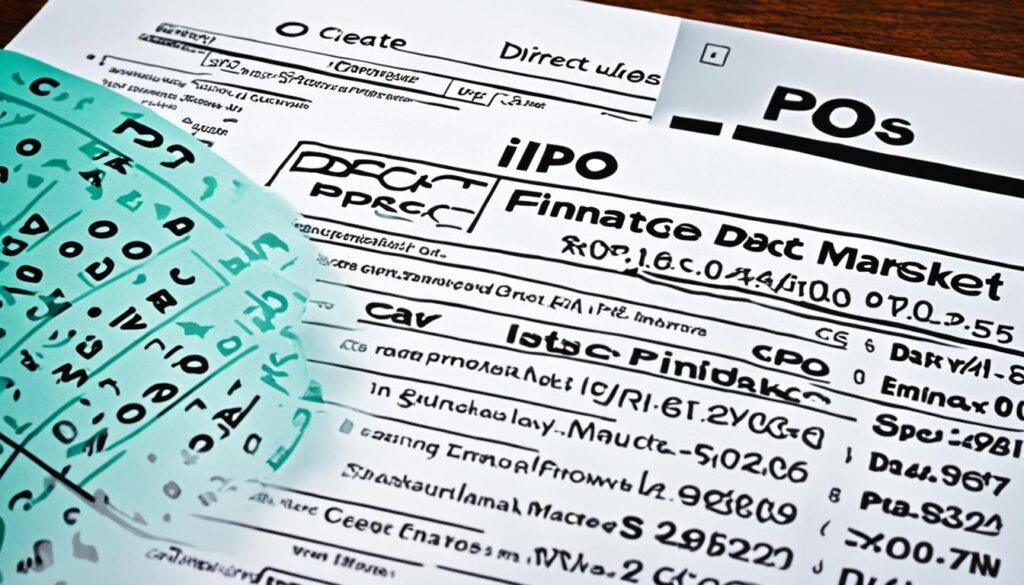Welcome to our comprehensive guide on public offerings, specifically focusing on Initial Public Offerings (IPOs) and Direct Listings. Going public is a significant milestone for companies, allowing them to raise capital and gain access to a wider investor base. In this article, we will explore the benefits, processes, and requirements of IPOs and Direct Listings, providing valuable insights for both investors and companies alike.
Before we dive into the details, let's first understand what IPOs and Direct Listings are and how they differ. An IPO is a traditional method of going public, where a company offers its shares to the public for the first time. This process involves underwriters who help price and sell the shares to investors. On the other hand, a Direct Listing is a relatively new approach that allows companies to list their shares on a stock exchange without raising capital through new share issuance.
Key Takeaways:
- Initial Public Offerings (IPOs) and Direct Listings are two distinct methods for companies to go public.
- IPOs involve underwriters and the issuance of new shares to the public, while Direct Listings allow companies to list existing shares.
- Direct Listings provide greater control for existing shareholders and potential cost savings.
- Consider the benefits, processes, and requirements of both IPOs and Direct Listings when deciding to go public.
- Successful transition into the public market requires careful consideration of IPO stock prices and meeting listing requirements.
Understanding IPOs and Direct Listings
In this section, we will provide a comprehensive understanding of initial public offerings (IPOs) and direct listings. Exploring the key differences between these two methods of going public, we aim to clarify the processes and options available for companies seeking to enter the public market and raise capital.
Going public: A transformative step for companies
Going public marks a significant milestone for companies, opening up opportunities for growth, increased visibility, and access to capital. There are two primary routes to achieve this - IPOs and direct listings.
The Initial Public Offerings (IPO) Process

An Initial Public Offerings (IPO) refers to the process of offering shares of a privately held company to the public for the first time. This involves several stages, including pre-IPO preparations, underwriting by investment banks, and the ultimate listing on a stock exchange.
The underwriters play a crucial role in facilitating an Initial Public Offerings (IPO). They assess the company's valuation, help determine an appropriate offering price, and assist in marketing the securities to potential investors.
Listing requirements vary depending on the stock exchange. Companies usually need to meet certain financial criteria, such as a minimum revenue threshold or a track record of profitability, to qualify for an Initial Public Offerings (IPO).
Advantages and Disadvantages of Initial Public Offerings (IPOs
IPOs offer several advantages, including the ability to raise a significant amount of capital and enhanced credibility in the market. Going public through an IPO can also provide liquidity to existing shareholders, offering an opportunity to cash in their investments.
However, IPOs come with certain downsides. The process can be costly, requiring substantial fees for underwriting, legal and accounting services, and compliance with regulatory requirements. Additionally, the intense scrutiny and pressure from public shareholders may place increased demands on management.
The Direct Listing Approach
Direct listings represent an alternative method for companies to go public without raising additional capital. Unlike IPOs, direct listings do not involve the issuance of new shares, rather, they allow existing shareholders to sell their shares directly to the public.
In a direct listing, the company does not engage underwriters or set an offering price. Instead, the stock is listed on a stock exchange, and trading begins based on supply and demand. This approach provides greater control and flexibility to existing shareholders.
Comparing IPOs and Direct Listings
When considering whether to pursue an Initial Public Offerings (IPO) or a direct listing, companies must weigh the advantages and disadvantages of each approach.
IPOs offer the potential to raise substantial amounts of capital, benefiting companies with significant growth plans or those looking to expand through acquisitions. However, they entail higher costs and more extensive regulatory obligations.
Direct listings, on the other hand, can be more cost-effective and offer greater control for existing shareholders. They are well-suited for companies that have strong brand recognition and a well-established investor base.

Ultimately, the choice between an IPO and a direct listing depends on a company's unique goals, circumstances, and strategic vision. By understanding the differences and implications of these two methods, companies can make an informed decision that aligns with their business objectives.
Exploring the Direct Listing Process
Direct listings offer companies an alternative pathway to going public, bypassing the traditional initial public offering (IPO) route. This section will provide a comprehensive overview of the direct listing process, highlighting its benefits and requirements.
Benefits of Direct Listings
A direct listing offers several advantages over an Initial Public Offerings (IPO). Firstly, companies can save on costs associated with underwriting fees, as there is no need to engage investment banks to facilitate the offering. This can result in significant savings, allowing companies to retain more capital for future growth and investment.
Furthermore, direct listings provide existing shareholders with greater control over the listing process. Shareholders have the flexibility to sell their shares directly to the public without being subject to lock-up periods or share price restrictions commonly seen in IPOs. This can promote liquidity and enable shareholders to access the public market more efficiently.
Requirements and Considerations
While direct listings offer notable benefits, companies must meet specific requirements and consider key factors before pursuing this option. One of the primary requirements is that a company must have a significant existing shareholder base, typically representing a substantial number of freely tradable shares.
In addition, companies planning a direct listing should carefully evaluate their market position, brand recognition, and investor demand. Building relationships with potential investors, analysts, and the media can enhance the success of the direct listing and create favorable market dynamics.
Moreover, it's essential for companies to have a robust and transparent financial reporting framework in place. This includes demonstrating compliance with regulatory requirements and maintaining accurate and up-to-date financial statements.
| Direct Listing Process | Benefits | Requirements |
|---|---|---|
| 1. Preparation and Planning | - Cost savings - Greater control for existing shareholders |
- Significant existing shareholder base - Accurate financial reporting |
| 2. SEC Filing | - Improved liquidity - Efficient access to public market |
- Fulfilling regulatory requirements |
| 3. Pricing and Public Trading | - Transparency - Fair market valuation |
- Building investor relationships - Compliance with exchange rules |
By understanding the direct listing process, as well as its benefits and requirements, companies can make informed decisions when considering this alternative method of going public.
Conclusion
In conclusion, when considering the benefits, processes, and requirements of going public, it is crucial for companies to carefully evaluate their options. Initial Public Offerings (IPOs) and Direct Listings offer distinct advantages and considerations that must be weighed to ensure the best outcome for both investors and the company.
One important aspect to consider is the significance of Initial Public Offerings (IPO) stock prices. Companies must carefully determine the appropriate stock price to set during the IPO process to attract investors while maintaining a fair valuation. Understanding market trends, competitor analysis, and financial projections are crucial to setting an optimal Initial Public Offerings (IPO) stock price.
Meeting listing requirements is equally important for a successful transition into the public market. Each stock exchange has its own set of criteria that companies must adhere to in order to list their shares. These requirements may include minimum market capitalization, financial performance standards, and corporate governance guidelines. By diligently preparing and meeting these requirements, companies can enhance their credibility and attract a broader base of investors during the IPO or Direct Listing process.



